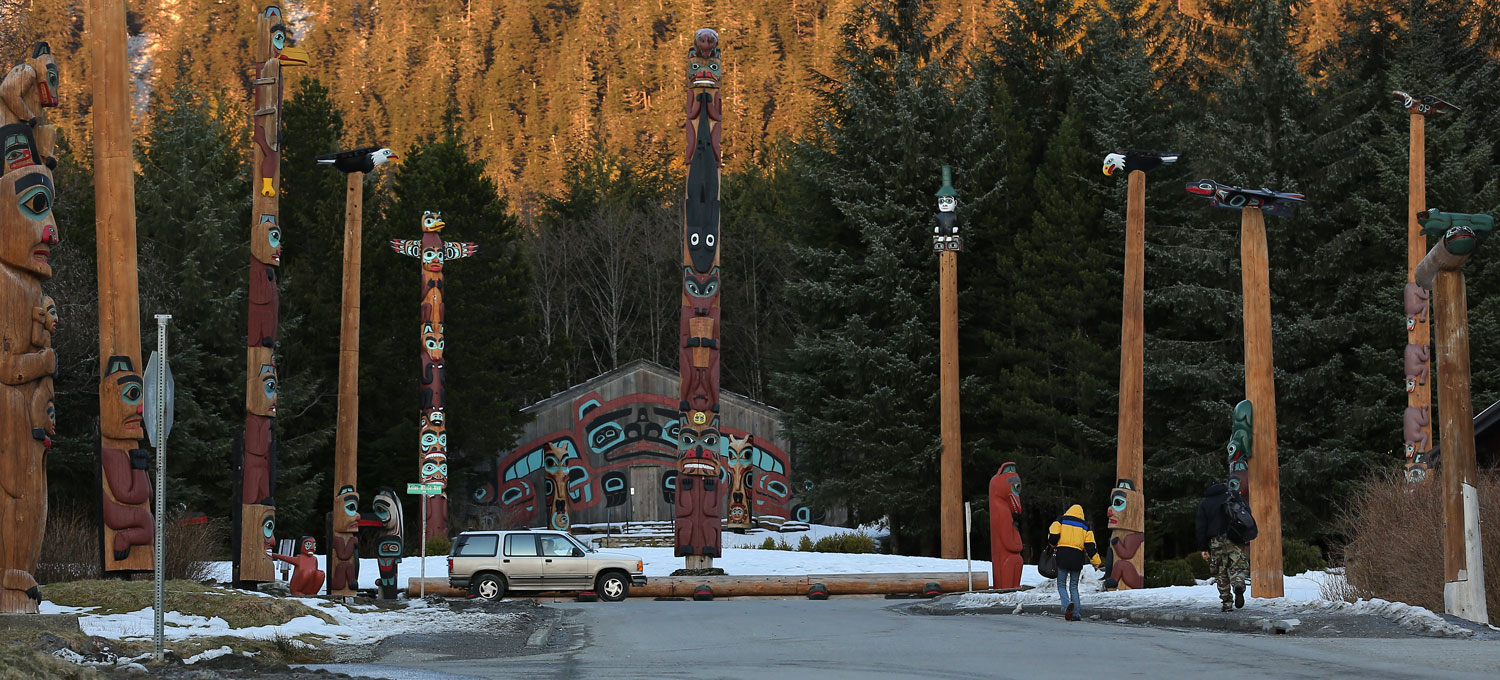Totem Poles at Saxman Native Village
/
Residents walk home surrounded by totem poles on a late winter day in Saxman, Alaska.

Imagine walking through your neighborhood surrounded by tall sculptures; artworks that tell about your history, your relatives, your stories; visual reminders of relationships, important people, and events. The residents of Saxman enjoy this life treasure, as the Saxman Village Totem Park stands along two central streets: Totem Row, Koote`eyaa, and Killer Whale Avenue, Ke`et .
As you have now gathered, totem poles have many meanings. Some of the types of poles are clan crests, mortuary poles, story poles, memorial poles, and house posts. In the past there were even shame or ridicule poles. They were very public announcements that someone behaved dishonorably. Those poles would be removed and destroyed if the offending person made amends.

The Beaver Clan House in Saxman Native Village. In the summer the Cape Fox Dance Group may be seen here.

A totem pole taking form in the carving shed at Saxman Alaska
Tradition defined some of the times that a totem pole would be commissioned. When the pole was completed and raised the story of it's significance was told, and then retold at events and gatherings.

Totem poles are not made to last forever. It is part of the plan that these works will respond to the natural way; to decompose and return to the earth.

Eye detail of a totem pole that is resting on the ground. Traditional formline designs portray human and animal features,

This bear totem is a reproduction carved by Donald Varnell, who says that he likes to "push the form." He brings in strong relief, lively curves, and an animated tension to his work.
Each carver follows traditional formline designs and then lends their own distinctive style within cultural bounds.
Many of the totem poles in Saxman Native Village were carved by Nathan Jackson, an internationally recognized master carver.
The Beaver Clan House at Saxman shows that artwork and communication in the Tlingit culture are integrated with daily life. Buildings are supported by, and adorned with, symbols of the society's customs and knowledge. Even everyday tools and objects are made into artworks that express Native culture.
There are tours of the Saxman Village Totem Park in the summer, as well as Native dancing and storytelling.
To learn more about totem poles you can also visit the Totem Heritage Center in downtown Ketchikan, just a few miles north of Saxman. There you will find an amazing collection of 19th century totem poles, objects and artwork, historical photographs, and excellent interpretive and educational signage.




Each of these totems tells stories. Nothing that I could write here to try to convey those stories would be accurate or appropriate. It is worth it to spend some time, get a feel of the place, look with your eyes and heart, and listen for what the totems are saying. But go in the summer, when the snow is off of the ground and the trees are leafed out. It is even nicer then!
Alaska Beachcomber
You may also enjoy a post on master carver Nathan Jackson.
To see more on Alaska Native Culture to to the Alaska Native Culture Index page!

